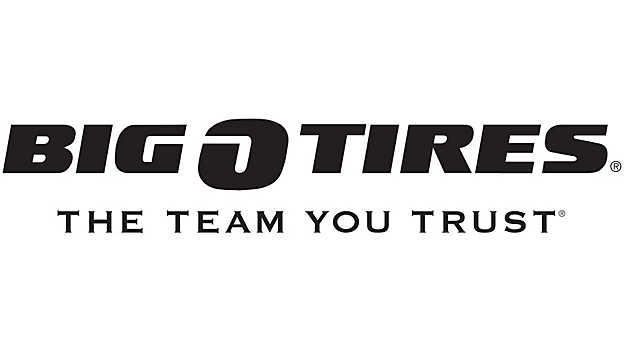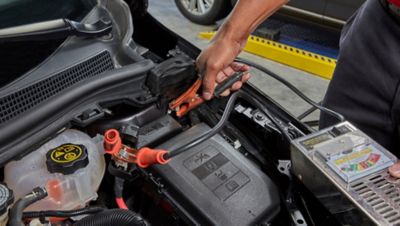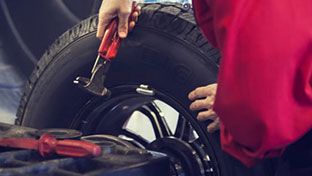TURNING TRUTHS
Making safe turns on cold, slippery surfaces is a wholly different animal than when on dry, warm pavement. It requires a lot more skill and forethought, so use these techniques to stay on course and maintain traction and control.

Brake before
When approaching a turn, brake softly and slowly to reduce speed. No slamming.
Slow & steady
While in the turn, keep the steering wheel as still as possible with no herky-jerky movements, and maintain a slow and steady speed.
Wait to accelerate
Make sure you're completely out of the turn and your wheels are pointing straight before you gas.
Spin solution
Whether you're driving a rear-, front- or all-wheel drive (4WD) vehicle, your tires are likely to spin if you gas too soon or too strongly in a turn. In a rear-wheel drive, back wheels will spin. In front-wheel drive, front wheels will spin, and in a 4WD, all four tires may spin. If you find yourself in a sticky spinning situation, keep the steering wheel steady and ease off the gas until tires regain traction.
Watch where you want to go
It's a good idea to keep your eyes looking through the turn toward where you want to go. Don't be tempted to stare at obstacles or roadsides that you want to avoid. Just look toward the straight away, and keep the steering wheel pointed steadily in that direction.
BRAKING IT DOWN
Bringing your car to a complete stop is a bit more complicated in wintertime and goes beyond just pressing the pedal.
Going the distance
Remember, the faster you're traveling, the more room you're going to need to stop. This is also called "braking distance" and having enough of it is even more important on wintry roads where there is less room for error. Some good rules of thumb:
- Anticipate how much braking distance you're going to need in all situations.
- Don't follow too closely. On dry roads, the 3-second rule works great, but on snow roads, it's more like a 10-second rule.
- Start braking early for intersections and stop signs so you can safely stop well short of the line.
- Equip your car with four winter tires, which can help you stop up to 25% shorter than all-season tires.
To Pump or Not to Pump
Should you pump the brake pedal to keep your wheels from locking? The short answer is no. But how strongly you should brake (gradually or all at once) depends on whether you have an anti-lock braking system, or ABS.
- If you have ABS: If you need to stop fast in an emergency and you have ABS, press the brake as hard as you can and don't let up. You're probably going to hear a strange noise and feel vibration. Don't panic (and don't pump!). This is just your brakes' way of saying they are doing their job, so keep the brake pedal pressed firmly until you stop or slow to a comfortable speed.
- If you don't have ABS: For emergency stops without an ABS system, brake quickly and strongly, but don't lock the wheels. It's important to really listen to your car on this one, so pay close attention to what it tells you. If you feel the wheels beginning to lock or starting to slide, release the brake slightly and then press it down again (and don't pump!).

